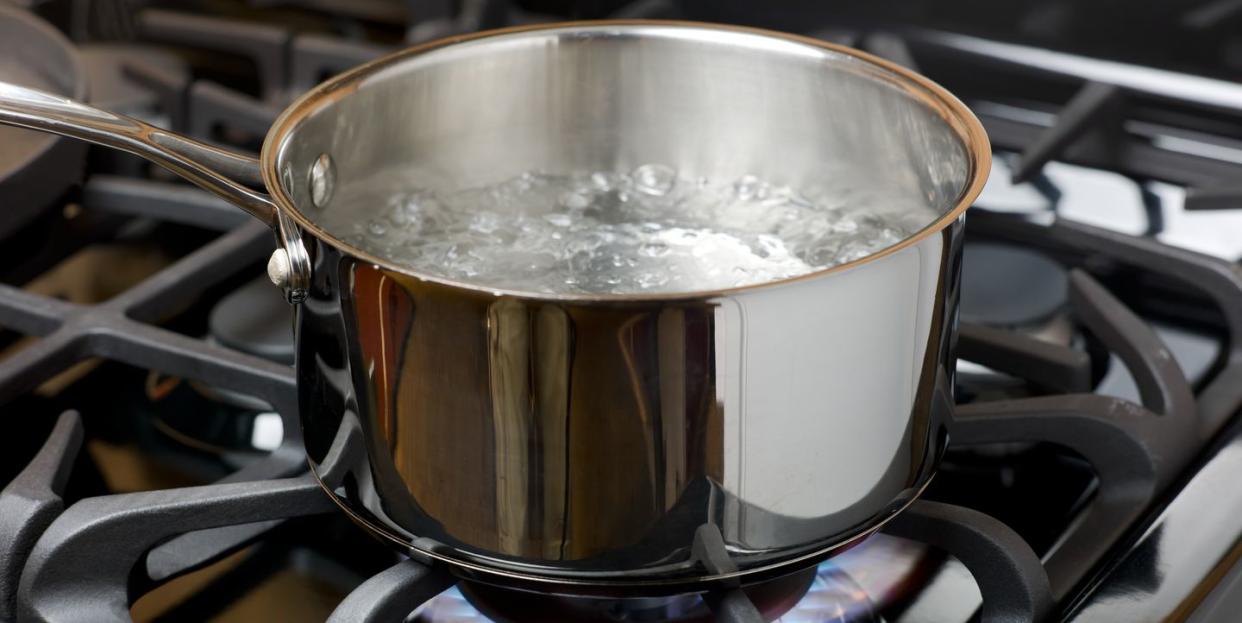The 'Hot Water Challenge' Is Back — And Yes, It's Still Very Dangerous

A 15-year-old boy suffered second-degree burns after his friend poured boiling water on him as a "joke."
The "joke" is part of the "Hot Water Challenge," which involves either throwing boiling water on someone, or having a person drink the boiling water through a straw.
At 212 degrees Fahrenheit, boiling water can cause serious second- or third-degree burns to the skin, which require immediate medical attention.
I can't, for the life of me, understand why someone would pour boiling hot water on someone else, but uh, it's happening.
It’s called the "Hot Water Challenge," and it involves either throwing boiling hot water on someone or having someone drink boiling hot water through a straw, according to ABC News 10.
Kyland Clark is a 15-year-old who says that he and a friend looked up the Hot Water Challenge on YouTube and they decided to prank each other. So, while Kyland was asleep, his friend poured boiling hot water on him … as a joke.
"And then I looked down at my chest. My skin just fell off my chest, and then I looked in the mirror and I had skin falling off here and on my face," Kyland said.
Kyland ended up with second-degree burns on his back, chest, and face, and had to stay in the hospital for a week to be treated.
This trend, unfortunately, isn't new: There are Instagram videos of people doing the Hot Water Challenge - sometimes to themselves - going back to last year. And, in July 2017, an eight-year-old girl died after her cousin dared her to drink boiling water, according to WFTS, Tampa Bay's ABC affiliate station. The girl severely burned her throat and mouth after drinking the water. The challenge reportedly left her deaf and with chronic respiratory issues, reports WFTS.
Just in case it's not totally obvious why you should never pour boiling hot water on someone (or intentionally drink it!), here's a quick refresher: Hot water can cause serious burns to your body, including second-degree burns (which affect the top and secondary layer of your skin) and third-degree burns (which reaches the fat layer beneath your skin and can cause nerve damage), according to the Mayo Clinic.
While first-degree burns - similar to sunburns - don't necessarily need medical attention, second- and third-degree burns should absolutely be seen by a doctor. And trust, you'll know if you have one.
"Second-degree burns are often painful and cause blisters," says Reed Caldwell, M.D., assistant professor at the Ronald O. Perelman Department of Emergency Medicine at NYU Langone Health. "Third-degree burns are when the skin is either very pale and thick-looking, or actually has muscle, fat, or bone showing," he adds.
If you are burned by hot water, it's important to act quickly. "The first step in any sort of burn is to remove whatever's burning you," says Caldwell. That means taking off any boiling water-soaked clothes ASAP - then rushing to the emergency room for treatment (which typically includes topical antibiotics and sterile bandages to prevent infection, according to the National Institutes of Health).
The best way to prevent something like this from happening to prevention (like, uh, telling your kids or "friends" not to do something like this), but it's also a good idea to make boiling hot water as inaccessible in your house as possible.
The Mayo Clinic specifically recommends setting your water heater’s thermostat to below 120 degrees Fahrenheit to make sure that no one in your house is burned in the shower or bath. FYI: Water's boiling point is 212 degrees Fahrenheit - so again, please, please don't pour it on anyone (or drink it yourself).
Kyland, who is expected to heal from his injuries, says he wants to warn other people not to do this challenge."There's a limit to what you should do in a challenge and what you shouldn't. Don't take it overboard," he said.
('You Might Also Like',)
